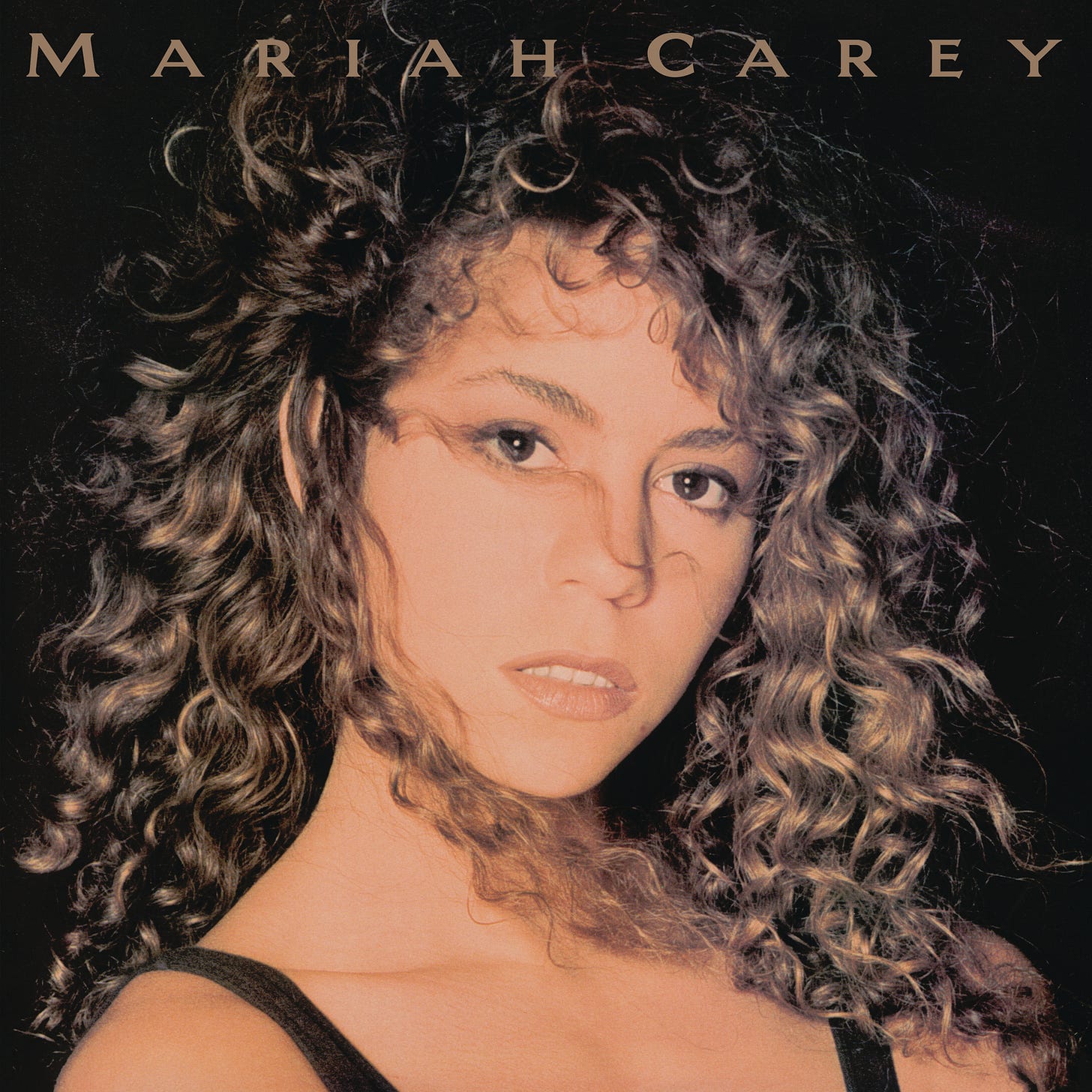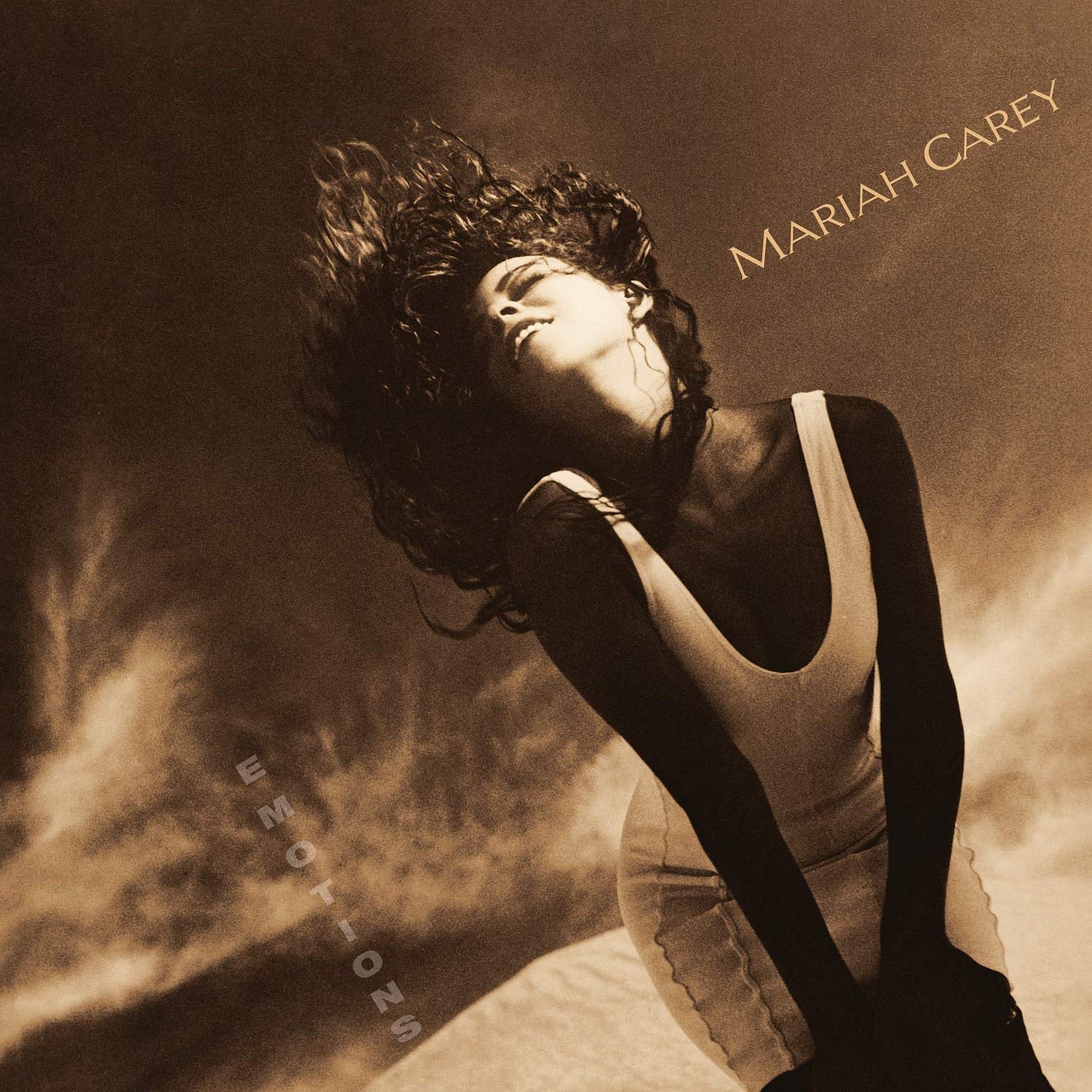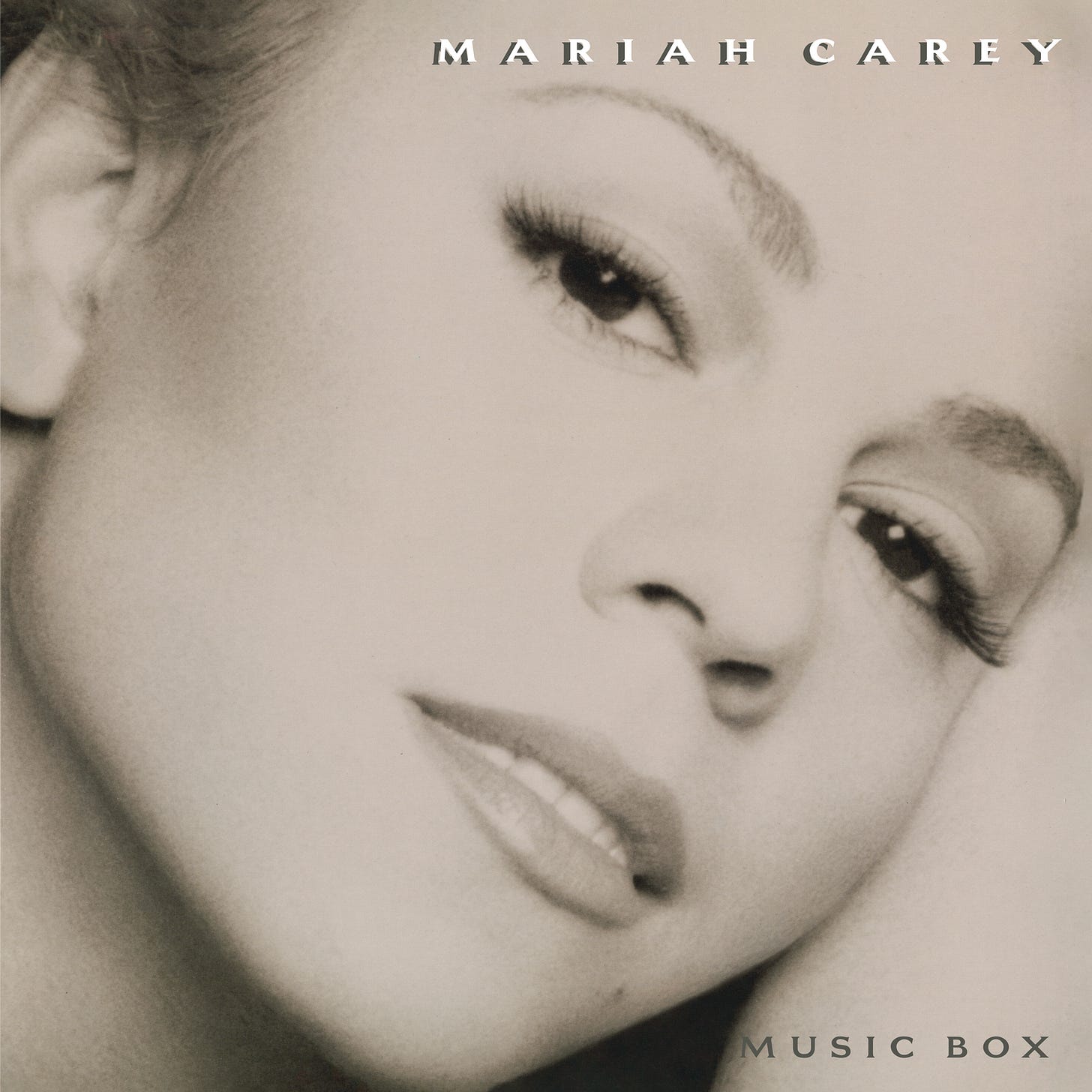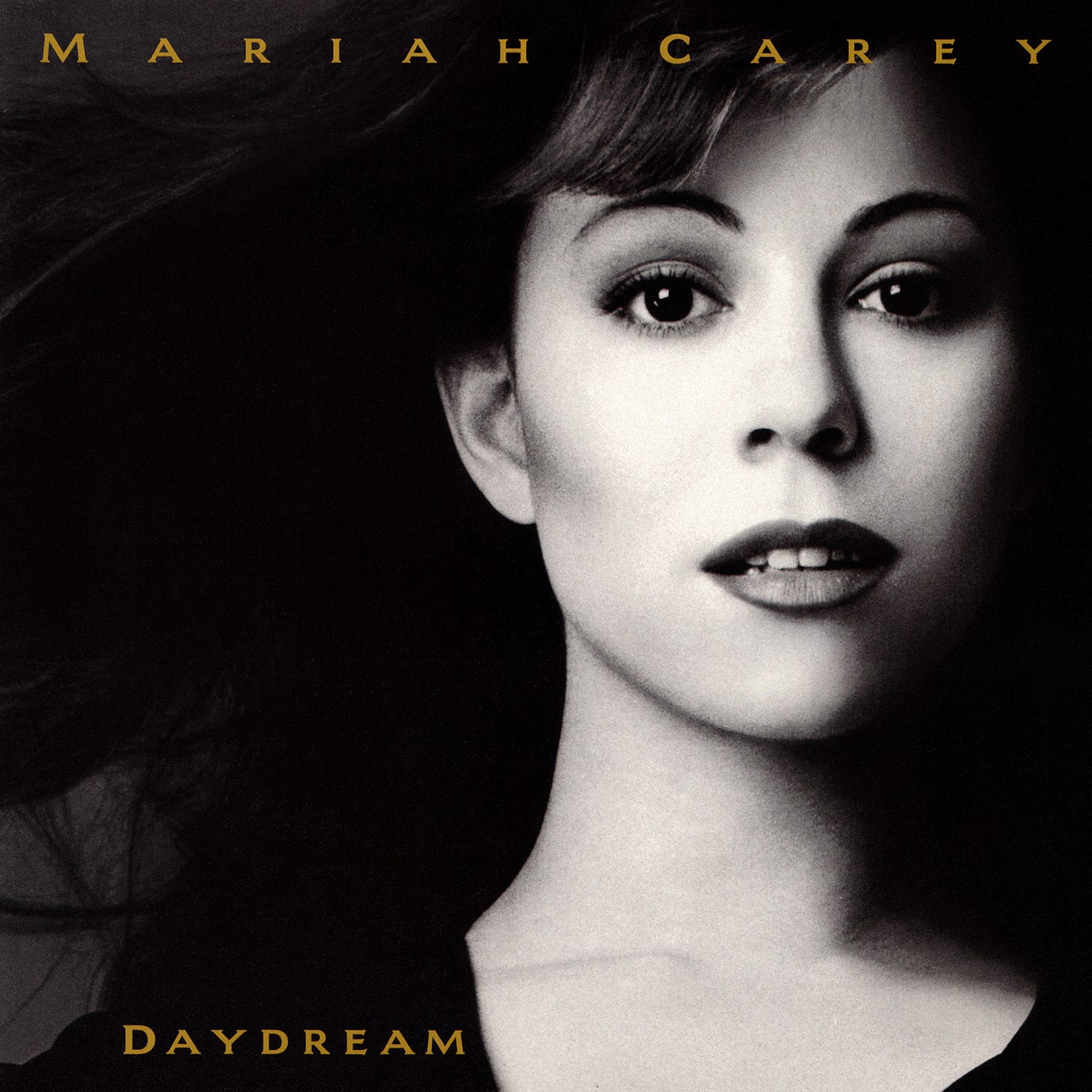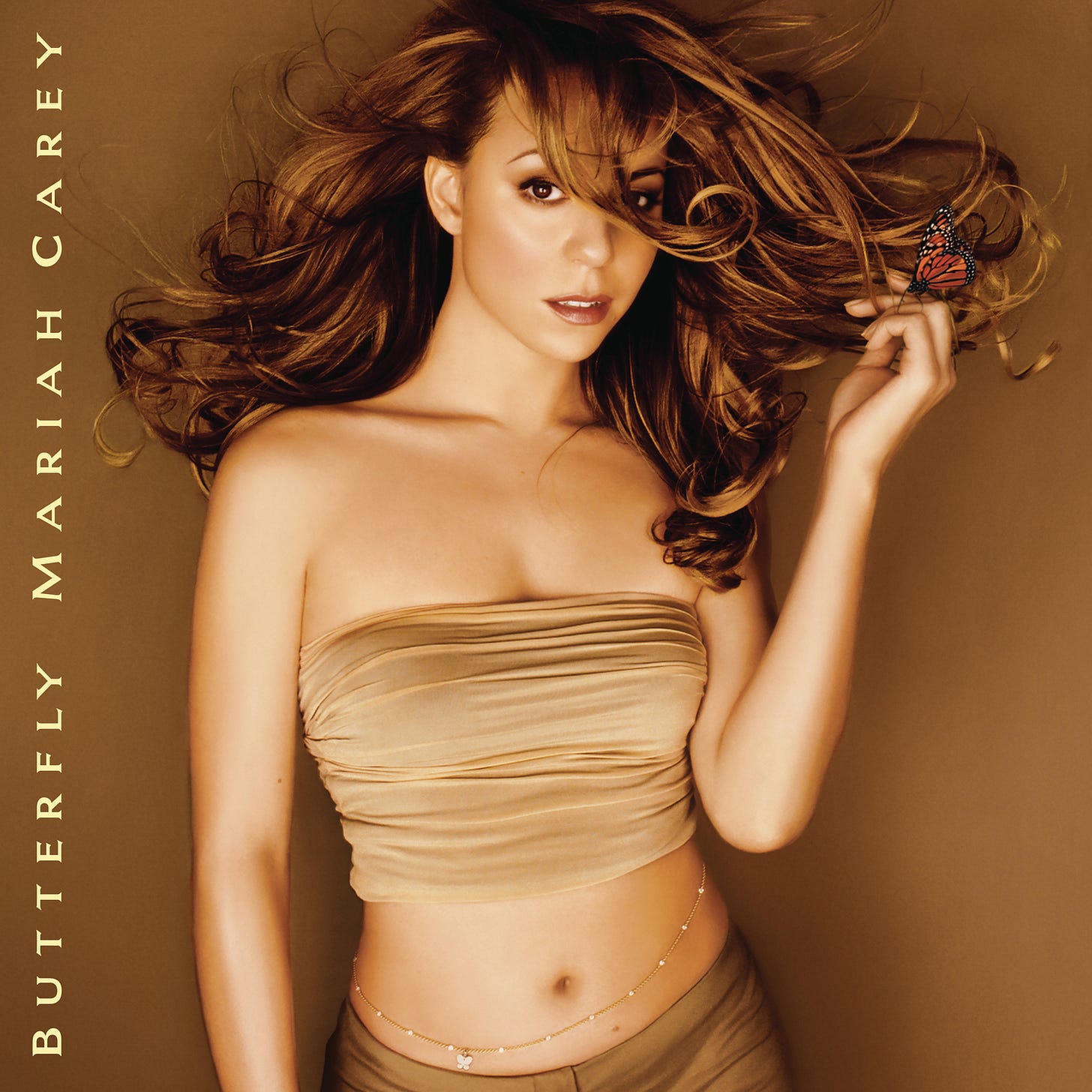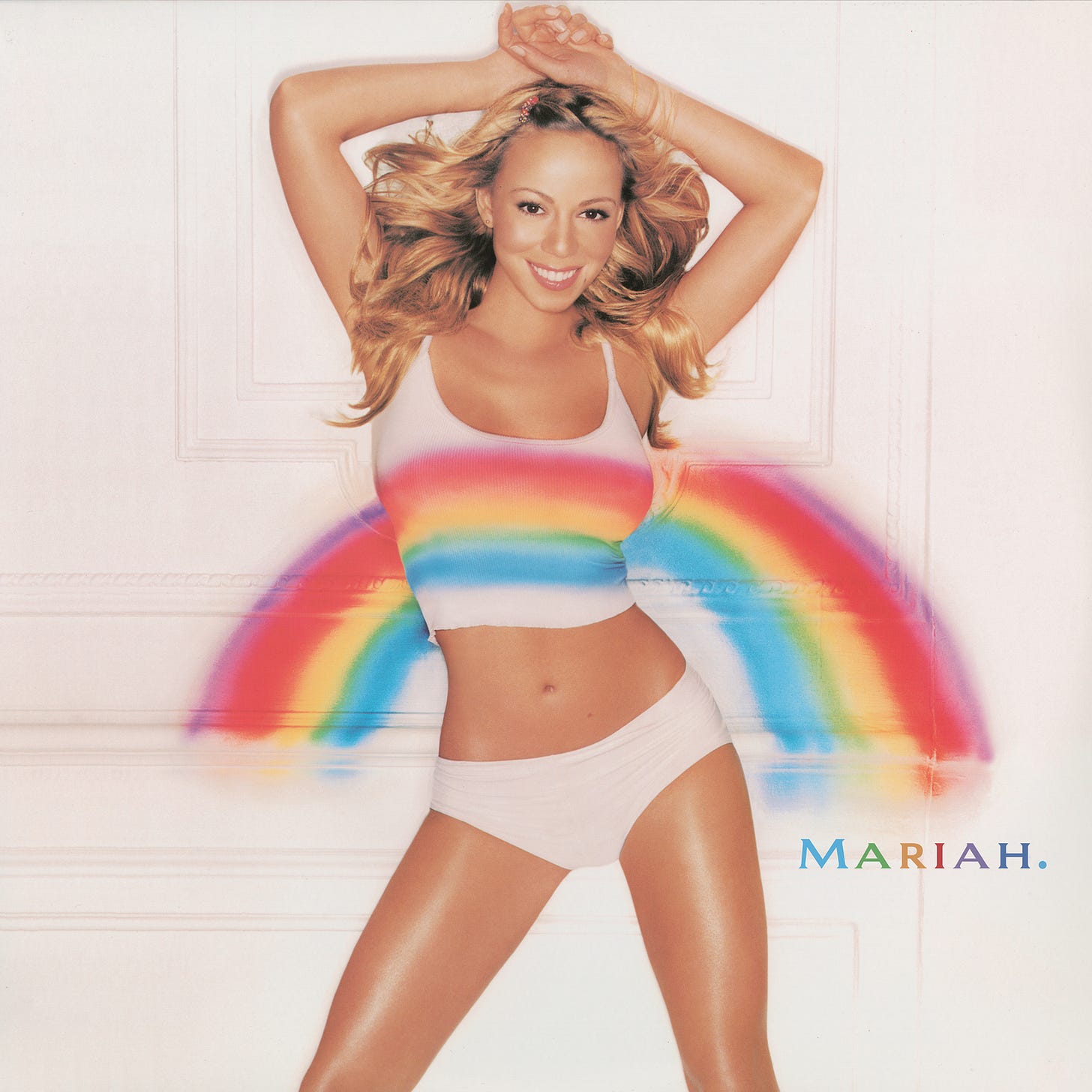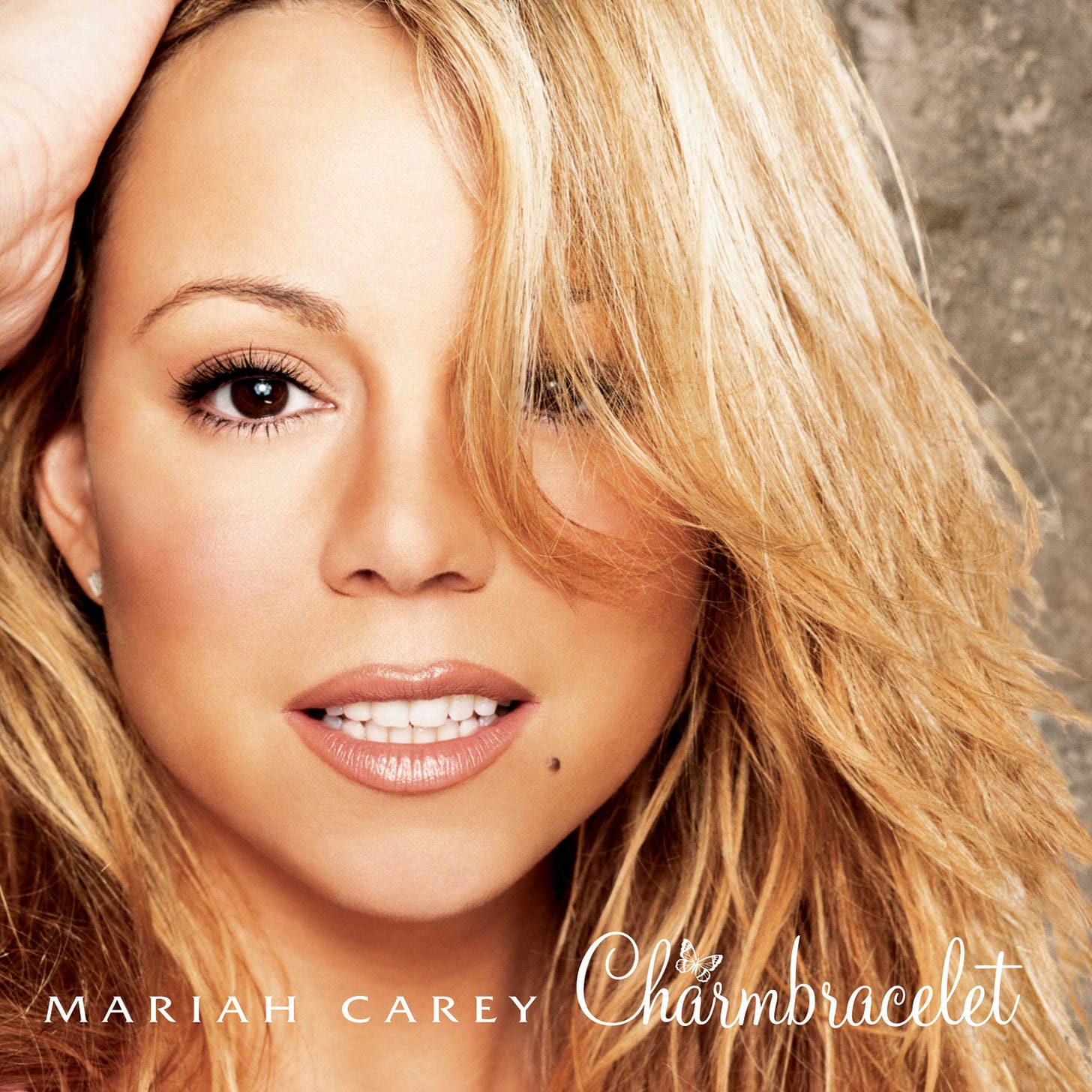Mariah Carey, Always Be Her Baby (2005 Commentary)
Mariah is back, and TEOM is already being hailed as a career high-point. Let us trace the road that led her here and rediscover what makes her singing irresistible.
Written by: 齋藤潤
The Return of the Voice
People are calling the record a “return to origins.” Counting the soundtrack set Glitter, it is her ninth proper studio album, and everywhere you look, the words “comeback” and “rebirth” are in the air. Island/Def Jam’s promotional slogan is “The Return of the Voice,” underlining the idea that Mariah has slipped back into the skin that first made her a star. The previous release, Charmbracelet, was her Island/Def Jam debut; some observers mocked it as “Mariah, Chapter Two,” but that judgment was more a product of hindsight than anything else.
The title The Emancipation of Mimi uses Mariah’s own nickname—“Mimi,” the heroine’s name in the music-industry novel Bling—and promises to free the version of Mariah that had been cloistered away. The lead single, “It’s Like That,” a party tune whose synth-bass funk recalls sleek ’80s grooves (with an alternate take featuring Snoop Dogg), presents her familiar melismatic style. However, what strikes you is how firmly she plants each note, how full and confident the R&B phrasing feels. The cut is produced by Jermaine Dupri, the same partner who guided her 1996 U.S. number-one “Always Be My Baby.” Dupri later explained that his goal, even during what outsiders dismissed as her “confused” Charmbracelet period, was to coax Mariah back into the studio with fresh energy; in fact, she spent roughly the last eighteen months pouring herself into the new material, and the extra care shows.
At press time, the album should already be on shelves, but because the on-sale date was shifted for marketing reasons, the Japanese edition, with sixteen tracks including bonus material, barely made the printer’s deadline. Besides Dupri, familiar allies such as James “Big Jim” Wright, L.A. Reid, the Neptunes, Kanye West, and James Poyser handle production; Mariah herself is, of course, deeply involved in vocals and arrangements. BMR’s editorial staff has heard the entire project and can say without exaggeration that it ranks with her best.
Stepping Back to Leap Forward
The jacket shot was lensed by Markus Klinko & Indrani, the duo whose photographs introduced Beyoncé’s solo debut. The choice alone tells you how serious Mariah is.
When fans call this a “return,” they are contrasting it with the difficult 1997–2001 stretch when Tommy Mottola’s divorce and Sony’s pressure left her exhausted. The critical drubbing of the Glitter soundtrack (2001) became the last straw; it forced both industry insiders and the public to see Mariah’s troubles as something more than tabloid gossip. Cynics tagged her as a casualty of the pop boom, but many listeners still cherished the sense-drunk thrill they felt hearing her 1990 debut single “Vision of Love.” To those people, the essence of Mariah had never changed. That purity is what the new album restores.
Born on Long Island on March 27th to a Black father (of Venezuelan heritage) and an Irish mother, Mariah never highlighted her “black blood” early on; yet, “Vision of Love” conveyed genuine gospel soul. The follow-up “Mariah” album (1990) topped the R&B chart as well. Year after year, from “Emotions” (1991) through “MTV Unplugged” (1992) and “Music Box” (1993), she balanced pop ballads with R&B muscle. The 1995 Daydream LP rolled out the club-infused “Fantasy” remix featuring Ol’ Dirty Bastard, proving she could ride hip-hop without diluting her songwriting. Butterfly (1997) pivoted even harder toward contemporary R&B via “Honey.” Rainbow (1999) blended Latin-tinged strings with street-level beats. Even the often-scorned Glitter (2001) supplied rough-and-ready old-school loops on “Loverboy (Remix).”
Hip-hop guest spots alone do not explain her staying power; beneath the glossy surface, Mariah has always gravitated toward gospel and mystic melodicism rooted in the South. You can hear it in her fondness for Patti LaBelle and Stevie Wonder, in the choir that lifts “Anytime You Need a Friend,” and in the Boyz II Men duet “One Sweet Day,” still beloved by wedding planners. From Whitney Houston’s “When You Believe” to Joe’s “Thank God I Found You,” the number of blockbuster duets she assembled is unmatched.
Reaching the Present Moment
Signing with Island/Def Jam in 2002 gave her artistic freedom, as well as the clout to create her own label imprint. While Charmbracelet had flashes of inspiration, it also bore the scars of her post-Sony turmoil. With The Emancipation of Mimi, however, every decision—from producers to featured guests—feels deliberate.
Among the uptempo cuts, “Stay the Night” flips Lamont Dozier’s “Betcha by Golly Wow” for a supple soul-jazz vibe that lets Mariah stretch and soar. “One and Only,” driven by Chicago beat-maker Kanye West, features Twista; her decision to look to Chicago at this juncture is typical of Mariah’s shrewd instincts.
The album’s centerpiece ballads are showstoppers. James Poyser’s “Mine Again,” co-written with Mariah and producer L.A. Reid, wraps her voice in velvet Rhodes, horns, and flutes—the pinnacle of Philly-schooled slow-jam craftsmanship. “Fourth of July,” originally slated for Charmbracelet, reappears as a rain-streaked sister to Rufus & Chaka Khan’s classic “Sweet Thing.” Matching that standard is Mimi’s gospel closer “Fly Like a Bird,” whose AOR chord changes recall Andraé Crouch in the early ‘80s. Mariah has rarely sounded more controlled—or more emotionally generous.
Why “Fly Like a Bird” Matters
The lyric suggests yet another layer of emancipation: after Butterfly (1997) cemented her “diva” persona, some critics seemed to wish she would simply vanish like a butterfly. Instead, Mariah aims to fly on purpose. That intent courses through the entire album. Many young R&B singers idolize her; The Emancipation of Mimi, with its impeccable producer line-up, shows them the ultimate goal.
Mariah Carey: Key Albums
The following capsule notes accompanied the original Japanese spread.
Mariah Carey (1990)
The self-titled debut that yielded “Vision of Love,” “Love Takes Time,” and “Someday,” all U.S. number-ones. Even on ballads she slipped gospel ad-libs between the seams; the template for her entire career.
Emotions (1991)
Uptempo title track channels early-‘70s soul; the whistle-register leaps are now legendary. The gospel choir on “If It’s Over” announced her command of live dynamics.
Music Box (1993)
Global block-buster housing “Hero,” “Without You,” and “Dreamlover.” Big Jim Wright’s CR-78-style shuffle on “Anytime You Need a Friend” marked her first flirtation with house remixes.
Daydream (1995)
Combines Tom Tom Club’s “Genius of Love” break (“Fantasy”) with orchestral ballads like “One Sweet Day.” Showed she could court hip-hop while retaining huge adult-contemporary appeal.
Butterfly (1997)
Turning point that deepened her R&B leanings; “Honey,” produced with The Trackmasters and Q-Tip, cracked the ceiling for pop-rap hybrids. Ballads such as “My All” remain fan favorites.
Rainbow (1999)
Alternates bombastic pop (“Heartbreaker”) with confessional torch songs (“Petals”). The Jay-Z guest verse on the “Heartbreaker” remix previewed her incoming Def Jam era.
Glitter (2001)
Soundtrack to the much-maligned film; despite the backlash, “Loverboy (Remix)” resurrected Cameo’s “Candy” for a new generation.
Charmbracelet (2002)
Island/Def Jam debut, whose single “Through the Rain” echoed her early inspirational anthems. While the album’s unevenness drew flak, it contains gems such as “Subtle Invitation.”


